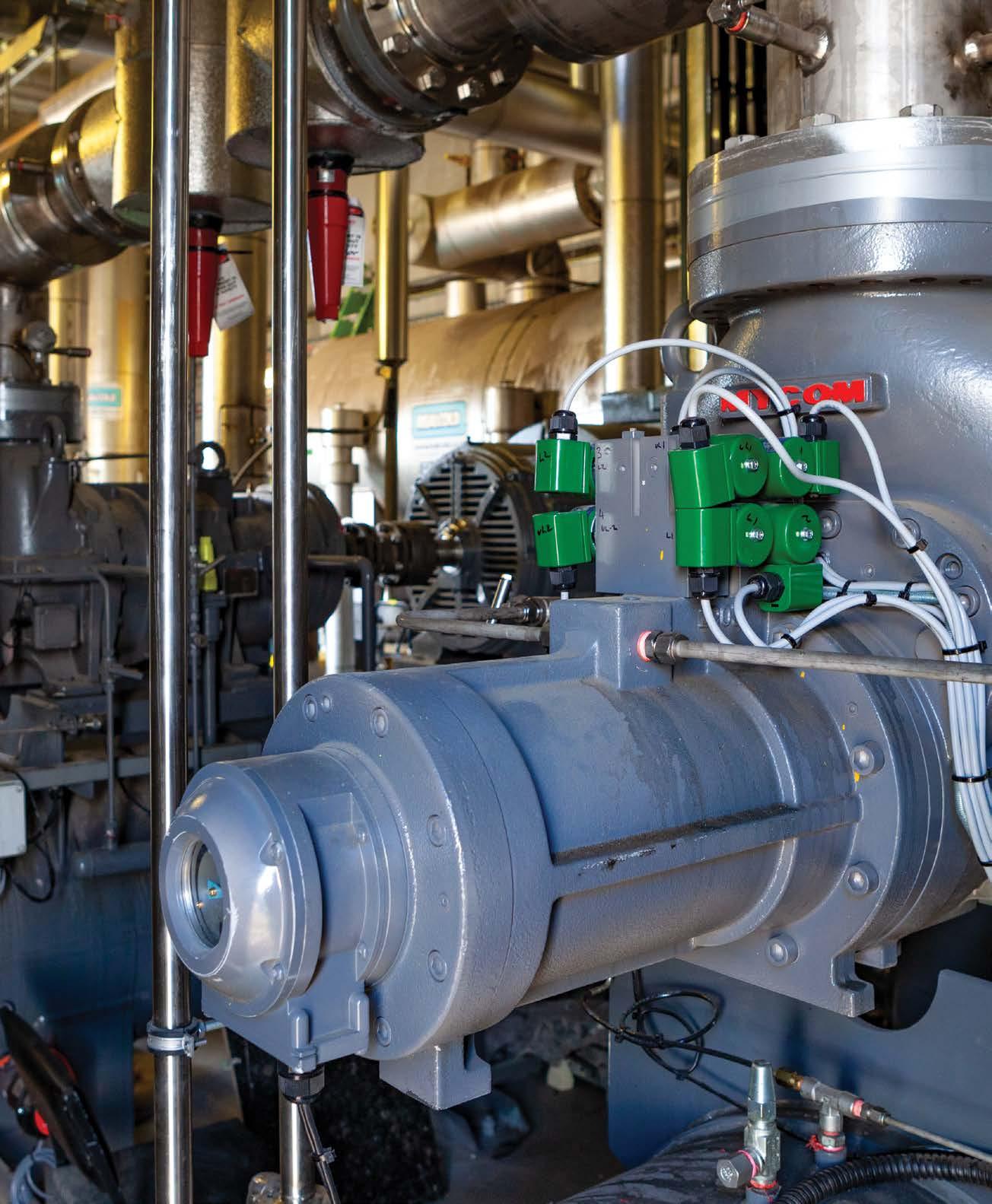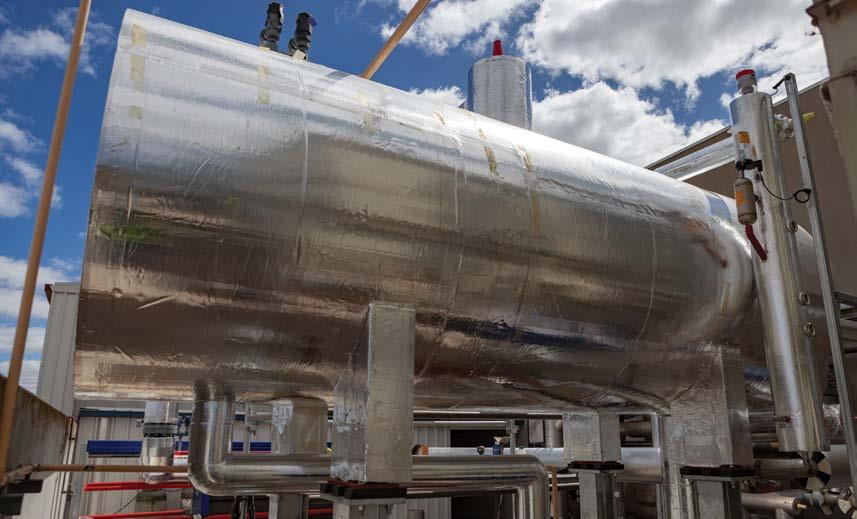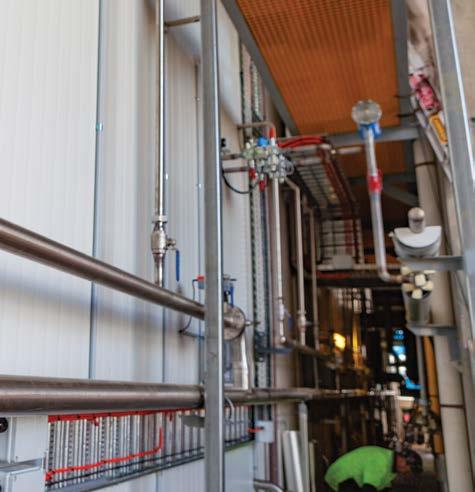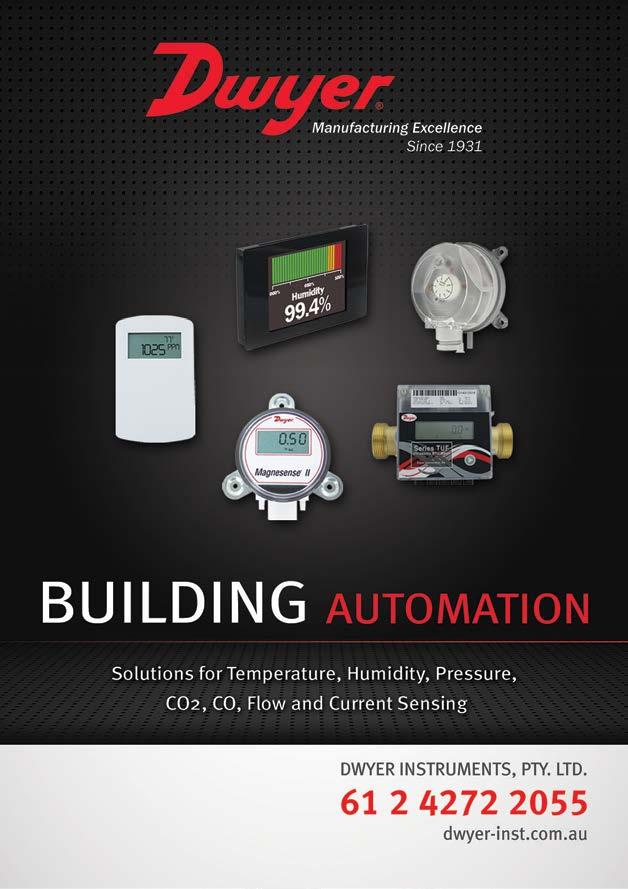
8 minute read
The big freeze
from HVAC&R Nation February 2020
by AIRAH
By running two compressors and designing for 75Hz overspeed, backup coverage is available. Source: Hoctor Refrigeration
One of Australia’s largest blast tunnel freezers has helped a Victorian lamb supplier triple its outputs, and has showcased the safe application of super low-temperature ammonia/CO2 cascade systems. Sean McGowan reports.
Advertisement
The Australian Lamb Company (ALC) is one of Australia’s largest lamb producers. It operates from two fully licensed facilities in Victoria – one in the Melbourne suburb of Sunshine and another in the south-west town of Colac.
The company processes over three million lambs per year for supply to Australian supermarkets, butchers, restaurants and hotels. It also fulfils export demand to South-East Asia, the Middle East and the USA.
The state-of-the-art Colac facility opened in 2000. Processed meat originally had to be sent to Sunshine to be frozen, until a $7 million cold storage facility was added in 2005.
It wasn’t long, however, before the company’s production exceeded the capacity of the cascade ammonia/CO2 blast freezing tunnel, leading to bottlenecks and inefficiencies. Meanwhile, domestic and export demand was increasing.
“The existing tunnel system handled a carton box rate of six lambs per minute,” says James Hoctor, director of Hoctor Refrigeration. “But the kill floor and boning room worked at 12.8 lambs per minute, meaning that the freezing process put a significant brake on production.”
At the same time, quality standards of export markets placed further pressure on ALC to deliver products frozen at lower temperatures.
While traditional markets required meat products frozen at -10°C, new growth markets were demanding -18°C freeze points and less time between slaughter and the consumer.
IMPROVING EFFICIENCIES
In 2018, ALC engaged consulting engineering firm Niras Australia to explore the expansion of the Colac facility’s cold store as part of a wider project looking at automation and improvements to the storage and handling capabilities.
The project was broken down into nine different packages. Refrigeration was one of them.
The system makes use of a cascade condenser. Source: Hoctor Refrigeration.

“The others included construction, conveyors, automated storage solutions, IT software interfaces, robotic palletising and racking systems,” says Glenn Jacobsen, senior consultant with Niras.
In June of the same year, Hoctor Refrigeration was commissioned to modify the existing freezer tunnel system with the aim of increasing capacity, minimising costs and delivering greater efficiencies.
Recognising that a single tunnel system was necessary – because plate freezing would not support
The testo 300 Flue gas analyser.
Smart, fast and robust.
Take 3 minutes and see how it can change how you work.
testo.com.au info@testo.com.au 1300 837 861
Scan to see the 15 sec video

The new tunnel can pull product temperatures down from +4°C to -12°C in just 24 hours. Source: Hoctor Refrigeration

DID YOU KNOW
FACT #1 Australia is the largest exporter of sheepmeat in the world, and is the world’s second largest producer of lamb and mutton (behind China).
FACT #2 The off-farm meat value (domestic expenditure plus export value) of the Australian sheepmeat industry was approximately $6.6 billion in 2018–19 – up 1 per cent on the previous year.
FACT #3 In 2018–19, Australia produced almost 501,000 tonnes (cwt or carcase weight) of lamb, and 230,000 tonnes (cwt) of mutton, with the average Australian consuming around 7kg of lamb and 0.3kg of mutton. This places us among the highest sheep meat consumers in the world.
FACT #4 Australia produced about 7 per cent of the world’s lamb and mutton supply in 2018.
FACT #5 Like the HVAC&R industry, Australia’s red meat industry is also a major employer, with around 172,000 people employed in on-farm production, processing and retail – and almost 32,000 agricultural businesses involved in the sheep and lamb industry.
Source: Meat & Livestock Australia

ALC’s different carton sizes – Hoctor leveraged the existing systems to create efficiencies with minimal disruption to operations.
“Sustainable natural refrigerants were already part of the equation,” says Hoctor. “But they had not been demonstrated at the super low temperatures required.”
Hoctor Refrigeration convened two project teams to coordinate the plant and tunnel elements, and worked with consultant engineer Klaas Visser, M.AIRAH, to design and deliver plant improvements.
The teams dismantled, manufactured, reinstalled and commissioned the modified, automatically loaded blast freezer tunnel, and in doing so increased capacity from 3,312 to 7,632 cartons per day.
TUNNEL VISION
The blast freezer tunnel at ALC Colac allows cartons of various sizes to be continuously stored at the same pace as product lines, while being frozen throughout the duration of the production process.
In the previous system, freezing took between 36 and 40 hours at -30°C to -35°C. The new tunnel is able to pull the product temperature down from +4°C to -12°C within just 24 hours.
To achieve this, the tunnel features the largest CO2 compressor package of its type in Australia at 1,200kW with 100 per cent redundancy to achieve temperatures between -45°C and -50°C.
“This expedites product movement, requires less plant and storage inputs and has resulted in 13 to 15 per cent less energy consumption,” says Hoctor. “There is now continuous product flow across the plant, while the lower freeze temperatures meet the food safety requirements of emerging markets.”
To eliminate ice formation on stock-control sensors, an innovative dehumidification system was used.
“By replacing the air in the tunnel with dehumidified air with a dew point lower than the operating temperature, ice cannot form,” he says.
The evaporator has successfully reduced the need for manual defrost maintenance. Previously, this required weekly plant stoppages and energy wastage.
ICY CHALLENGES

The team had to overcome a number of challenges inherent to super low-temperature systems in CO2 plant design for the ALC Colac project.
These included maintaining a steady suction pressure and the selection of plant materials suitable for the required rated pressures.
“At -56.6°C, CO2 reaches triple point, where it transforms from liquid to solid (dry ice),” says Hoctor. “The refrigeration design nudges this edge closely, with agile controls and control logic in place.”
Managing oil at low temperatures also proved a challenge.
The original system at ALC Colac used a pumped CO2 system and four coil blocks. In the new system, Hoctor Refrigeration designed custom DX evaporators and had them manufactured to increase capacity and overcome potential oil logging issues on the modified system.
According to Jacobsen, one of the largest challenges of a project like this was the interruption to existing operations.
“Throughout the whole process we had key stakeholders from ALC involved in weekly project meetings to ensure all parties were aware of what the others were up to,” he says.
“ALC could provide processing information and operation times, and the trades, including Hoctor Refrigeration, could work around as best as possible to ensure production did not become affected at all.”
To further minimise disruptions, Hoctor Refrigeration took the innovative approach of running two compressors and designing for 75Hz overspeed as well as 100 per cent redundancy.
Any safety risk associated with the potential mixing of ammonia and CO2 was mitigated by the installation of high-alert cross-contamination sensors – the first of their kind to be used in Australia. The volume of ammonia charge within the system was also minimised as much as possible.
During commissioning, sensors were checked and readjusted on multiple occasions due to the steel shrinking by 20mm when the freezer was brought down to the operating temperature.
The safety risk of CO2 and ammonia mixing was mitigated by installing high-alert cross-contamination sensors, the first time used in Australia. Source: Hoctor Refrigeration

and commissioning so many different components and parts in the project’s short timeframe.
“It was also a challenge to quickly source equipment with appropriate load capacity,” says Hoctor, who scoured six countries for the right equipment.
Onsite spatial limitations were resolved by assembling components at a dedicated factory in Bendigo in central Victoria. These were then transported to the site, where Hoctor Refrigeration teams deftly manoeuvred around ALC operations.
Overall, Jacobsen says the modifications made to the operating facility at ALC Colac have improved many aspects of the inherent OH&S issues associated with traditional cold store facilities.
“ALC has a big focus on employee safety, and working alongside all parties ensured this was a major aspect of this project,” he says.
END GAME
According to Hoctor, the improved 24-hour, lowtemperature blast freezer tunnel operating at ALC Colac demonstrates the capabilities of ammonia/ CO2 cascade systems running at lower temperatures to deliver higher yields.
“By adopting low-emission refrigerants and benefitting from a lower temperature freeze, our stakeholders
can realise higher yields, find operating efficiencies, reduce equipment and maintenance costs, and enhance environmental credentials,” he says.
Additionally, Hoctor says the project represents a refrigeration-led approach to business growth and economic development, and showcases the HVAC&R industry as an enabler for other industry sectors to become more sustainable, profitable and reputable.
“The innovation at ALC Colac demonstrates how financial and environmental imperatives can be mutually supportive,” he says. “And (I hope) it will inspire risk averse naysayers to be confident in the safety and capacity of low-emission ammonia and carbon dioxide models to deliver at scale.”
So when you next throw a lamb chop on the barbie, know that refrigeration has played a large part in that meat’s progress from paddock to plate. ■
FINALIST
Hoctor Refrigeration’s work on the ALC Colac project was a 2019 AIRAH Awards finalist in the Excellence in Innovation category.











